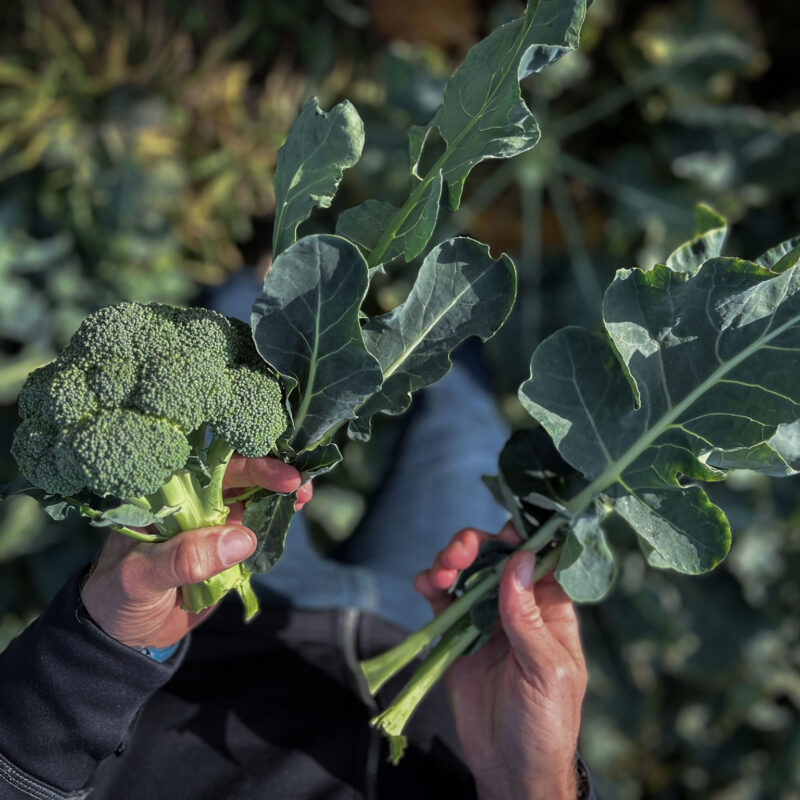Chef of The Year 2024 Aims for Anatomical Responsibility: How to Best Prepare Kidney, Blood, and Liver?
2024.06.12
When the untrained event in the qualifying competition for Chef of The Year 2024 (Årets Kock) was announced, the contestants were given quite a challenge. The task was: Use a whole Hubbard Chicken. Some call it “from nose to tail,” others say “anatomical responsibility.” But what does it really mean, and why is it important? Meet Stefan Eriksson, Head of Ingredients for Chef of The Year, and Anna Henning Moberg, Operations Manager for Axfoundation’s Development Center Torsåker Farm, in a discussion about sustainability, culinary creativity, and the uncomfortable fact that a third of all food produced globally is wasted.
This is a great step in the right direction! It’s truly exciting that Chef of The Year is leading the way in sustainable gastronomy. Focusing on anatomical responsibility, this competition segment shows how top-tier culinary culture and sustainability can go hand in hand.
– Anna Henning Moberg, Operations Manager for Torsåker Farm, Axfoundation
The Chef of The Year competition is Sweden’s most prestigious cooking competition, where the best professional chefs compete for the title. In recent years, several steps have been taken to integrate sustainability into the Swedish Championship in professional cooking, including increased focus on Swedish ingredients and assessment of how contestants minimize food waste. In Chef of The Year 2024, this work is being deepened, and Axfoundation is contributing expert advice on sustainability.
When the untrained event in the qualifying competition was to be decided, the competition management settled on anatomical responsibility where the competing got a whole Hubbard chicken including the intestines – a deliberate choice from both a sustainability and culinary perspective.
We want to see chefs focus on anatomical responsibility because all parts of the ingredient have value – economically, taste-wise, and environmentally. The chefs must demonstrate their ability to utilize everything, in harmony with flavor, texture, and aesthetics.
– Stefan Eriksson, Head of Ingredients for Chef of The Year and winner of Chef of The Year 2005
About Chef of the Year
Each year, the competition Chef of The Year is held in Sweden. In 2024, the qualifying competition takes place on June 11-12 where eighteen chefs compete by preparing their submitted recipe entries.
The 12 chefs with the highest scores from day 1 advance to day 2 of the qualifying competition. There, they face additional professional tests, an untrained segment that this year focuses on utilizing a whole Hubbard Chicken.
The 6 chefs with the highest total scores after the qualifying days move on to the final on October 17th. One of the final challenges is to prepare a vegetarian dish using at least three preserved ingredients from June to August. The best-performing chef wins the title Chef of The Year and becomes the Swedish Champion in professional cooking.
Chef of The Year has elevated Swedish gastronomy since its inception in 1983, with the mission to lead Swedish gastronomy into the future. Throughout the competition, a jury evaluates the various segments. Besides these segments, a methodology jury also assesses how the contestants work in their respective kitchens. In addition to handling the main ingredient, hygiene, organization, logistics, and service, they also evaluate ingredient handling and food waste.

Chef of The Year is Sweden’s most prestigious cooking competition. A jury evaluates everything from handling the main ingredient to food waste. Image from Årets Kock 2023 when Desirée Jaks won.
Sustainability, Taste and Nutrition
Utilizing all parts – from both animals and plants – is a matter of nutritional content and taste but also sustainability. Today, the food sector accounts for nearly a third of all global greenhouse gas emissions, 80% of biodiversity loss, and 70% of freshwater use. At the same time, almost a third of the food produced globally is wasted, a major challenge especially when it comes to meat.
In today’s meat production, enormous side streams of cuts and by-products are not used resource-efficiently in Sweden. Swedes consume very little organ meat such as liver, kidneys, and blood—only a fraction of all blood from slaughterhouses goes into food, the rest becomes biogas or animal feed. Often, it’s the most nutritious parts that go to waste.
This is an excessive waste of resources that we simply cannot afford if we are to eat and live within the planet’s limits. Many are currently talking about increasing food production in Sweden, but it feels crazy when we already have so many good ingredients that are thrown away or used as animal feed!
– Anna Henning Moberg, Axfoundation

In Chef of the Year 2024, Axfoundation contributes expert advice on sustainability in the competition.
From Fine Dining to Everyday Meals and School Kitchens
Chef of The Year has an important role to play regarding food waste. The ambition has always been to lead Swedish gastronomy into the future, breaking new ground, exploring trends that advance the craft, and inspiring the next generation of culinary talents.
If anyone should lead the way in sustainability and anatomical responsibility, it is us who work professionally with cooking. We must set the standard and show how fantastic these parts are that we do not use frequently today. It is truly us chefs who can transform and create modern versions of offal, liver, kidneys, and blood.
– Stefan Eriksson, Head of Ingredients at Chef of The Year
Using the whole ingredient is something everyone can do, whether you’re a chef at a fine dining restaurant, in a public kitchen, or cooking at home, says Anna Henning Moberg, who leads the development work for sustainable meals at Torsåker Farm. She emphasizes that anatomical responsibility is tasty, economically smart, sustainable, nutritious – and simple.
Anatomical responsibility is not difficult. It’s something everyone can do, both at home and in restaurant kitchens. So challenge yourself with your everyday dinner, school lunch, or festive meal. What can you do with chicken carcasses or broccoli stalks?
– Anna Henning Moberg, Axfoundation


























































